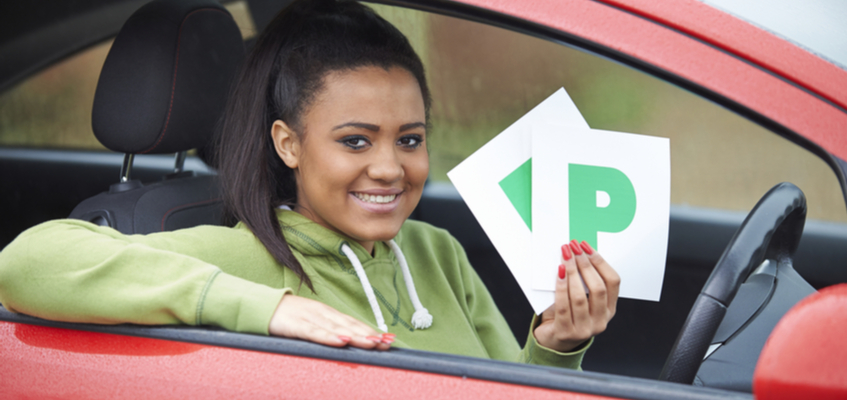Money Expert > Car Insurance > Should I use a P plate after passing my test?
Should I use a P plate after passing my test?
Last updated: 08/03/2022 | Estimated Reading Time: 3 minutes
Money Expert > Car Insurance > Should I use a P plate after passing my test?
Last updated: 08/03/2022 | Estimated Reading Time: 3 minutes
So, you’ve finally passed your test. It took hours of your time, hundreds of pounds and more patience than you knew you had. Naturally, your first instinct is to get behind the wheel. No doubt there’s some friends you want to show off to, or at least a stretch of road that looks particularly appealing.
Before you set off however, you might be wondering about your P plates, whether you have to use them and what, if anything, they’re for. Fortunately we’re here with the answers, so put down your keys for a minute and have a read.

P (or probationary) plates are green pieces of metal that you attach to the back of your car to let people know you’ve recently passed your test.
Rather than being used to show off your new skill, they are designed to inform drivers that you are less experienced. Hopefully, this means that motorists will be a little more aware of your presence and afford you time and patience they might not offer to others.
While using L plates when you're a learner driver is an absolute must, there are no hard and fast rules about whether or not you need to use P plates once you’ve passed. You might choose to use them in the immediate period after your test, but you do not have to.
If you get into an accident and weren’t using them, you won’t be deemed any more liable, so there’s no need to worry about that.
The only place that this is different is in Northern Ireland, where new drivers are required to display R plates (standing for restricted) for one year after they pass.
While you don’t have to, it’s generally advisable to use it at least for a short while after you’ve passed your test. Even though you might feel road-ready, it will likely be the first time you’ve driven alone.
Having P plates displayed clearly will let drivers know that you are new to life on the roads. As a result, they are more likely to be forgiving if you make a mistake, which could help ease the pressure if you accidentally stall on a roundabout.
You are also likely to be afforded a wider berth by motorists, giving you that little bit of wiggle room you might need to get comfortable on the road.
If you decide to make use of them, how long you keep them is entirely up to you. Some young drivers will feel at home on the roads after a couple of weeks, whereas others might take a little bit longer.
As long as you're not feeling 100% confident on the roads, we would recommend that you keep your P plates on. If that means they remain there for years after you’ve passed your test, then so be it. The most important thing is to do whatever makes you feel the most comfortable.
Your probationary period extends for 24 months after you have passed your test. During this time, you face stricter rules than more experienced drivers, with six points on your licence all you need to have your right to drive taken away from you. Car insurance premiums are also likely to be higher for new and inexperienced drivers.
However, there is no obligation to use P plates during your probation.